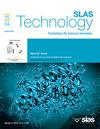Self-supervised disc and cup segmentation via non-local deformable convolution and adaptive transformer
IF 3.7
4区 医学
Q3 BIOCHEMICAL RESEARCH METHODS
引用次数: 0
Abstract
Optic disc and cup segmentation is a crucial subfield of computer vision, playing a pivotal role in automated pathological image analysis. It enables precise, efficient, and automated diagnosis of ocular conditions, significantly aiding clinicians in real-world medical applications. However, due to the scarcity of medical segmentation data and the insufficient integration of global contextual information, the segmentation accuracy remains suboptimal. This issue becomes particularly pronounced in optic disc and cup cases with complex anatomical structures and ambiguous boundaries. In order to address these limitations, this paper introduces a self-supervised training strategy integrated with a newly designed network architecture to improve segmentation accuracy. Specifically,we initially propose a non-local dual deformable convolutional block,which aims to capture the irregular image patterns( boundary). Secondly,we modify the traditional vision transformer and design an adaptive K-Nearest Neighbors(KNN) transformation block to extract the global semantic context from images. Finally,an initialization strategy based on self-supervised training is proposed to reduce the burden on the network on labeled data. Comprehensive experimental evaluations demonstrate the effectiveness of our proposed method, which outperforms previous networks and achieves state-of-the-art performance,with IOU scores of 0.9577 for the optic disc and 0.8399 for the optic cup on the REFUGE dataset.
基于非局部可变形卷积和自适应变压器的自监督圆盘杯分割。
视盘杯分割是计算机视觉的一个重要分支,在病理图像自动分析中起着举足轻重的作用。它能够精确、高效和自动地诊断眼部疾病,极大地帮助临床医生在现实世界的医疗应用。然而,由于医学分割数据的缺乏和对全局上下文信息的整合不足,分割精度仍然不理想。这个问题变得特别明显视盘和杯病例复杂的解剖结构和模糊的边界。为了解决这些限制,本文引入了一种与新设计的网络架构相结合的自监督训练策略,以提高分割精度。具体来说,我们最初提出了一种非局部对偶可变形卷积块,其目的是捕获不规则的图像模式(即。边界)。其次,对传统的视觉变换进行改进,设计自适应k近邻变换块,从图像中提取全局语义上下文;最后,提出了一种基于自监督训练的初始化策略,以减轻网络对标记数据的负担。综合实验评估证明了我们提出的方法的有效性,该方法优于以前的网络,并达到了最先进的性能,在REFUGE数据集上视盘的IOU得分为0.9577,光学杯的IOU得分为0.8399。
本文章由计算机程序翻译,如有差异,请以英文原文为准。
求助全文
约1分钟内获得全文
求助全文
来源期刊

SLAS Technology
Computer Science-Computer Science Applications
CiteScore
6.30
自引率
7.40%
发文量
47
审稿时长
106 days
期刊介绍:
SLAS Technology emphasizes scientific and technical advances that enable and improve life sciences research and development; drug-delivery; diagnostics; biomedical and molecular imaging; and personalized and precision medicine. This includes high-throughput and other laboratory automation technologies; micro/nanotechnologies; analytical, separation and quantitative techniques; synthetic chemistry and biology; informatics (data analysis, statistics, bio, genomic and chemoinformatics); and more.
 求助内容:
求助内容: 应助结果提醒方式:
应助结果提醒方式:


